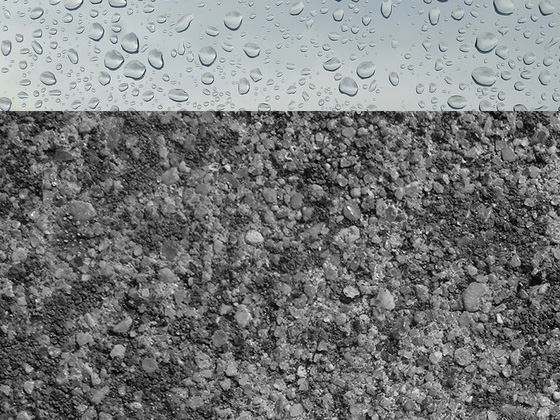
Straight to the Core
A functioning infrastructure is the key to a society’s prosperity and well-being. But the roads and bridges in prosperous countries are getting old. In the United States, 56,000 bridges are deemed to be structurally deficient; in 2016, roughly 3.8 million square meters of bridges were found to be in urgent need of repair in Germany alone.
Built for Eternity?
Many of the bridges and roads in highly developed countries were built decades ago. Not only has the volume of traffic quadrupled since that time – extreme weather events with high temperatures and freezing conditions (including chloride pollution from road salt) are increasing as well. The enemy here? Water.

An Unwelcome Intruder
All of the damage that occurs in concrete is caused by moisture penetration. When it rains on a concrete road or when a concrete bridge is exposed to ocean spray, the water is literally drawn into tiny cavities (capillaries) in the concrete – and because of the capillary effect, this even works against gravity. Water can cause significant damage once it has invaded, whether due to freeze-thaw cycles or chemical reactions, or because it transports aggressive substances like road salt into the concrete.
Rust: An Explosive Phenomenon

Concrete is usually reinforced with steel when installed. But the pH of fresh concrete is high, which protects the steel from rust. If, however, the concrete reacts with the CO2 in the air, its pH sinks and it no longer protects the steel as well as it once did. And if moisture is introduced on top of that, the reinforcing steel may corrode. The volume of rusted steel is many times greater than that of uncorroded steel, and this generates pressure that ruptures the surrounding concrete. Steel that has been compromised in this way by rust puts the integrity of bridges and buildings at an acute risk. That risk is particularly great for steel-reinforced concrete exposed to seawater or road salt, both of which contain chlorides. If spray or condensation transports these chlorides onto the concrete and they penetrate all the way down to the steel reinforcement, the rust will produce pits that eat deep into the metal. Known as pitting corrosion, this phenomenon is not visible from the outside – by the time it is discovered, the structure often will have already sustained lasting damage.
The Best Protection? Hydrophobization
Effectively protecting concrete from water can extend its service life significantly. There are two ways to do this:
Find Out More!
Go to our product portal for an overview of all of WACKER’s solutions for concrete.
To the product portal

